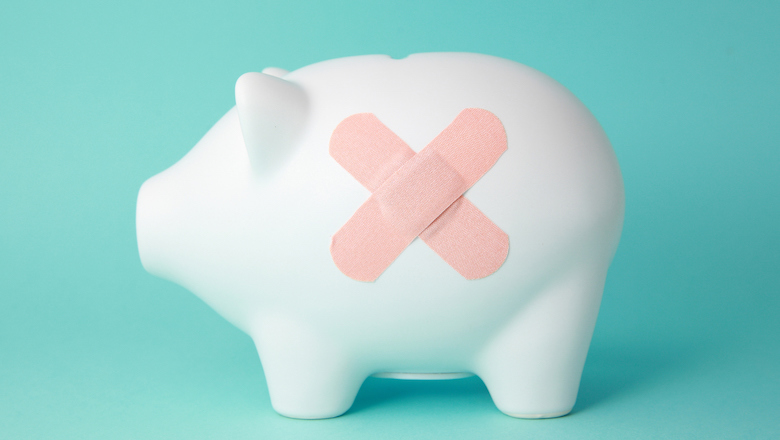What Are the Different Types of Debt?
Debt may seem like something you want to avoid. But having some debt can actually be a good thing, provided you can comfortably afford to make your payments each month.
A good payment history shows lenders that you can be responsible with borrowed money, and it will make them feel better about lending to you when the time comes for you to make a big purchase, like a home.
But not all debt is created equal. Consumer debt can generally be broken down into two main categories: secured and unsecured. Those two categories can then be subdivided into installment and revolving debt. Each type of debt is structured differently and can affect your credit score in a different way.
Here are some helpful things to know about the different types of debt, plus how you may want to prioritize paying down various balances you may already have accumulated.
Secured vs Unsecured Debt
The first distinction between types of debt is whether it’s secured or unsecured. This indicates your level of liability in the event you fall behind on payments and go into default on the loan or credit card.
Secured Debt
Secured debt means you’ve offered some type of collateral or asset to the lender or creditor in exchange for the ability to borrow funds. There are many types of secured debt. Auto loans and mortgages are common examples.
The benefit is that you improve your odds for approval by offering collateral, and you may also receive a better interest rate compared to unsecured debt. But if you go into default on the loan, the lender is typically allowed to seize the asset that’s securing the debt and sell it to offset the loan balance.
If that happens, not only is your property repossessed, your credit score can also be severely damaged. This could make it difficult to qualify for any type of financing in the near future.
A foreclosure, for instance, generally stays on your credit report for seven years, beginning with the first mortgage payment you skipped.
Unsecured Debt
Unsecured debt comes with much less personal risk than secured debt since you don’t have to use any property or assets as collateral.
Common types of unsecured debt include credit cards, student loans, some personal loans, and medical debt. Since you don’t have to put up any type of collateral, there may be stricter requirements in order to qualify. Your lender will likely check your credit score and potentially verify your income.
With unsecured debt, you are bound by a contractual agreement to repay the funds, and if there is a default, the lender can go to court to reclaim any money owed. However, doing so comes at a great cost to the lender. For this reason, unsecured debt generally comes with a higher interest rate than secured debt, which can pile up quickly if you’re not careful.
💡 Quick Tip: We love a good spreadsheet, but not everyone feels the same. An online budget planner can give you the same insight into your budgeting and spending at a glance, without the extra effort.
Installment vs Revolving Debt
The difference between secured and unsecured debt is one way to classify financing options, but it’s not the only way.
Both secured and unsecured debt can be broken down further into two additional categories: installment debt and revolving debt.
Installment Debt
Installment debt is usually a type of loan that gives you a lump sum payment at the beginning of the agreement. You then pay it back over time, or in installments, before a certain date.
Once you’ve paid the loan off, it’s gone, and you don’t get any more funds to spend. Examples of this type of debt include a car loan, student loan, or mortgage.
There are a number of ways an installment loan can be structured. In many cases, your regular payments are made each month, with money going towards both principal and interest.
Less frequently, an installment loan could be structured to only include interest payments throughout the term, then end with a large payment due at the end. This is called a balloon payment. Balloon payments are more frequently found with interest-only mortgages. Rather than actually making that large payment at the end of the loan term, borrowers typically refinance the loan to a more traditional mortgage.
Installment loans can have either a fixed or adjustable interest rate. If your loan has a fixed rate, your payments should stay the same over your entire term, as long as you pay your bill on time.
A loan with an adjustable rate will change based on the index rate it’s attached to. Your loan terms tell you how frequently your interest rate will adjust.
Provided you make your payments on time, having a mortgage, student loan, or auto loan can often help your credit scores because it shows you’re a responsible borrower. In addition, having some installment debt can help diversify your credit portfolio, which can also help your scores.
Revolving Debt
Unlike installment debt, revolving debt is an open line of credit. It gives you an amount of available credit that you can draw on and repay continually.
Both credit cards and lines of credit are common examples of revolving credit. Instead of getting a lump sum at one time (as you would with installment debt), you only use what you need — and you only pay interest on the amount you’ve drawn.
Your available credit decreases as you borrow funds, but it’s replenished once you pay off your balance.
Revolving debt can be unsecured, as in the instance of a credit card, or it can be secured, such as on a home equity line of credit.
One downside of revolving credit is that there’s no fixed payment schedule. You typically only have to make minimum payments on your revolving credit, but your interest continues to accrue.
That can result in a much higher balance than the original purchases you made with the funds. And if you miss a payment, you’ll likely owe late fees on top of everything else.
Because it’s easier to get caught in a cycle of debt, having large revolving debt balances can hurt your credit score. A balance of both revolving and installment debt can give you a healthier credit mix, and potentially a better credit score.
💡 Quick Tip: Check your credit report at least once a year to ensure there are no errors that can damage your credit score.
Debt Payoff Strategies
Whatever kind of debt you carry, the key to avoiding a negative debt spiral — and maintaining good credit — is to pay installment debt (such as your student loan and mortgage) on time, and try to avoid carrying high balances on your revolving debt.
While everyone’s financial circumstances are different, here are some debt payoff strategies that can help you prioritize your payments.
Paying off the Highest Interest Debt First
If your primary goal is to save money over the life of your loans, you may want to start by paying off your highest interest rate loan first, while making just the minimum payments on everything else.
You can then move on to the next highest and next highest until your debts are paid off. This payoff approach is often referred to as the “avalanche” approach.
Paying off the Debt with the Smallest Balance First
Paying down debt can feel never-ending, so it can be nice to feel like you’re making progress. By focusing on your smallest debts first (and paying the minimum on everything else), you can cross individual loans off your balance sheet, while quickly eliminating monthly payments from your budget.
Once paid off, you can then reroute those payments to make extra payments on larger loans, an approach often referred to as the “snowball” method.
Considering Debt Consolidation
If you don’t see a clear strategy for paying off your debt, you might consider debt consolidation. This involves taking out a single personal loan to consolidate your other balances. If your credit score has increased, this may be a good way to decrease your overall interest rate. But at a minimum, this move can help streamline your payments.
Being Wary of Debt Settlement Companies
If you’re feeling overwhelmed by debt, you may look for a shortcut with a debt settlement company.
Debt settlement is a service typically offered by third-party companies that allows you to pay a lump sum that’s typically less than the amount you owe to resolve, or “settle,” your debt. These companies claim to reduce your debt by negotiating a settlement with your creditor.
Paying off a debt for less than you owe may sound great at first, but debt settlement can be risky.
For one reason, there is no guarantee that the debt settlement company will be able to successfully reach a settlement for all your debts. And you may be charged fees even if your whole debt isn’t settled.
Also, if you stop making payments on a debt, you can end up paying late fees or interest, and even face collection efforts or a lawsuit filed by a creditor or debt collector.
The Takeaway
At some point in your life you may be juggling one or more of these different kinds of debt. Understanding the various types of debts and maintaining a varied mix of loans (including secured, unsecured, installment, and revolving) can help you increase your creditworthiness.
You can also improve your credit by making all of your debt payments on time, and keeping balances on revolving credit (like credit cards) low.
Take control of your finances with SoFi. With our financial insights and credit score monitoring tools, you can view all of your accounts in one convenient dashboard. From there, you can see your various balances, spending breakdowns, and credit score. Plus you can easily set up budgets and discover valuable financial insights — all at no cost.
SoFi Relay offers users the ability to connect both SoFi accounts and external accounts using Plaid, Inc.’s service. When you use the service to connect an account, you authorize SoFi to obtain account information from any external accounts as set forth in SoFi’s Terms of Use. Based on your consent SoFi will also automatically provide some financial data received from the credit bureau for your visibility, without the need of you connecting additional accounts. SoFi assumes no responsibility for the timeliness, accuracy, deletion, non-delivery or failure to store any user data, loss of user data, communications, or personalization settings. You shall confirm the accuracy of Plaid data through sources independent of SoFi. The credit score is a VantageScore® based on TransUnion® (the “Processing Agent”) data.
Checking Your Rates: To check the rates and terms you may qualify for, SoFi conducts a soft credit pull that will not affect your credit score. However, if you choose a product and continue your application, we will request your full credit report from one or more consumer reporting agencies, which is considered a hard credit pull and may affect your credit.
Financial Tips & Strategies: The tips provided on this website are of a general nature and do not take into account your specific objectives, financial situation, and needs. You should always consider their appropriateness given your own circumstances.
SORL1023032




